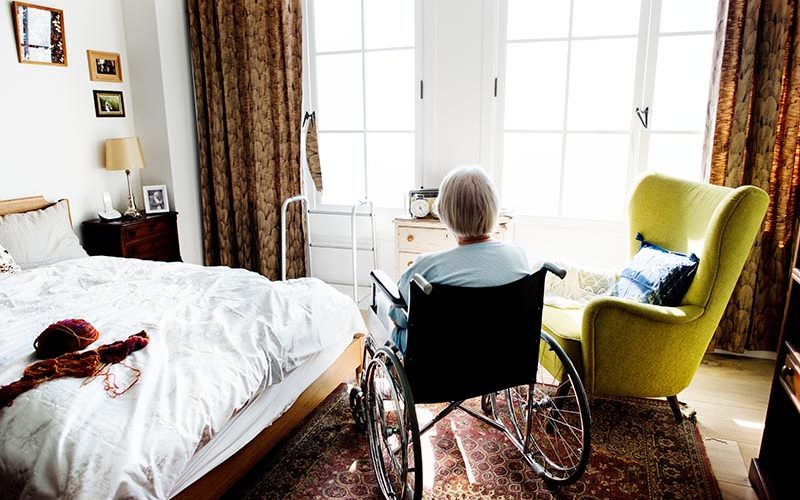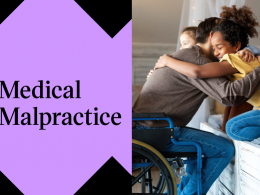The use of bed rails is often overlooked as a safety measure in nursing homes. While there are many benefits to using bed rails, you should also be aware of the dangers associated with their misuse.
Bed rails can help prevent falls and reduce the potential risks of both fatal and nonfatal injury by securing the mattress at the bottom edge. However, if a patient is unable to use their arms or legs, they may not be able to reach out to grab the rail.
Reports by the U.S. Food and Drug Administration (FDA) and the Consumer Product Safety Commission (CPSC) show that bed rails are one of the reasons patients suffer severe injuries, such as falls and entrapments, and even death in hospitals and nursing facilities.
Severe injuries can happen quickly when nursing or hospital bed rails are not used properly. A fall from a height of three feet can cause more serious injuries such as broken bones and internal bleeding. In addition, most patients have difficulty standing after they have fallen off their bed due to weakness or illness.
What are bed rails?
Bed rails are a safety feature on the bed of a person who is vulnerable, such as a child, an elderly, or a disabled person.
Bed rails are a common feature in hospitals and nursing facilities. They’re a form of bed controls designed to prevent patients falling out of bed. They also provide additional support for their upper bodies and the raised foam edges.
Nursing home and hospital bed rails can be either attached to the frame of the bed or fixed to the floor with screws. They’re designed to prevent accidents by keeping people out of harm’s way while they sleep.
Bedside rails are usually made from plastic or metal and have hooks and other attachments to attach them to the bed frame.
Bed rails potential benefits
Bed rails are often used in elderly care facilities to help:
Reduce falls
Bed rails are designed to prevent falls by keeping residents in a nursing home or assisted living facility safe while sleeping. This is especially important for older adults who often experience balance issues while on routine activities due to age-related conditions such as arthritis or dementia.
Prevent bedrail injuries
Bed rails can also reduce the risk of injuries due to falls and other accidents, which can lead to more serious health problems for seniors. For example, a fall can result in skin bruising, broken bones, or internal injuries that could potentially lead to death if not treated properly.
Why are bed rails not used in nursing homes?
Many people are unaware that bed rails can be dangerous. For example, nursing home residents could suffer a bed rail entrapment, in which they get trapped between their mattresses and side rails, and become injured.
Another factor that can make bed rails dangerous is that they don’t always work as intended. The design of the bed rail may not be ideal for an older person because it doesn’t allow them to move around freely or independently, thereby potentially inducing agitated behavior or leading to an accident or injury.
Patients who use bed rails could also suffer from pressure ulcers caused by being strapped down too tightly or having their legs tied together while they sleep (which is not recommended).
In addition to bed rail entrapment and other potential risks, most patients end up feeling isolated feel and stigmatized by having someone watching over them every night while they sleep — especially if they don’t want people at all times during the day. This can lead some seniors to become more depressed and anxious than they already were because they’re feeling watched over 24 hours a day instead of just during
Are bed rails considered a restraint?
Are bed rails considered a restraint in a nursing home? The short answer is yes. Bed rails are used to limit uncontrolled body movement or agitated behavior by a patient who often falls out of bed and struggles to get up again. The only exception is for certain patients with dementia or who suffer from mental illness and are unable to care for themselves, or other high-risk patients with similar mental status.
But bed rails also come with potential risks for elderly patients. In most cases, they are a serious violation of patient safety and privacy rights. In some cases, it may also be considered assault by staff members. Therefore, many nursing facilities have strict regulations regarding the use of physical restraints on patients who cannot care for themselves.
If you suspect your elderly family member resident in an assisted living facility may have been unnecessarily restricted, get in touch with your nursing home attorney for a free case review.
Can they cause injury?
Bed rails in nursing homes are often used to keep patients safe and secure in their beds. They can help prevent patients fall or reduce the greater risk of slippage while sleeping. However, they can also be dangerous if they’re used incorrectly.
Some bed rails are too heavy, causing them to slip off the bed or break under pressure when a patient tries to get out of bed. Others can break when patients climb over them, causing injuries that could lead to more serious problems down the road.
Bed rails can also be dangerous if they’re not used correctly or a patient has been unnecessarily restricted. For example, if a resident’s bed rail has no way to lock it in place, they could easily push down on the rail while they’re lying in bed, causing the senior to fall out of the bed. If there is no way for the caregiver to know when an elderly resident has fallen out of bed, this may lead to serious injuries or even death for the patient.
Bed rail safety tips
When you think about bed rails in nursing home facilities, you probably picture them as a bed safety feature. And they are! But that doesn’t mean they’re perfect. Here are five things to keep in mind about the use of bed rails for the elderly:
Monitor patients frequently
You should never leave a patient unattended on or near the bed rail. The patient’s physical weight could cause it to break and fall, causing serious bodily injury or deaths related pain. If there is no resident’s physician or health care worker at the bedside, call for help immediately.
Ensure the bed rail is properly positioned
The bed rail must be properly positioned on each side of the bed frame so that it will not interfere with or prevent easy access to the patient for caregivers while performing routine activities.
Check; don’t assume
Don’t assume that just because your patient can reach out over the top of their bed rail, they won’t get hurt if they fall over the side while reaching for something or trying to get out of bed fast. Always check before moving your patient, especially when they first come in and again periodically throughout the day to make sure they’re still safe.
Don’t tamper with the deb rail construction
Don’t change or remove any part of your bed rail system without calling for professional help first and having them check over all parts of the bed before doing so; there may be hidden dangers that could cause bad bodily injury if they are damaged while disassembled or assembled incorrectly.
How are bed rails regulated?
In the US, there are different state laws regarding proper size mattresses and bed rail use in nursing facilities. There are also federal regulations regarding this issue of the right and wrong mattress.
For example, the U.S. Consumer Product Safety Commission (CPSC) has established standards that must be followed by all manufacturers of safety devices for nursing home beds and chairs designed for preventing patients from falls from beds or chairs, including product specifications and labeling requirements.
These standards, which are further recommended by the Food and Drug Administration (FDA), help ensure that consumers who rely on them don’t get the wrong bed and can use the bed safely every day for rest and relaxation, as well as for providing calming interventions and pain relief. This is especially so for those who have limited mobility and need help getting out of bed or sitting down at meal times.
Centers for Medicare and Medicaid Services (CMS) also provide further regulation on bed rails; with assist bars, bedside rails, grab bars, safety rails, and side rails listed as examples.
When can bed rails be used?
Bed rails can be helpful or dangerous depending on the person and situation. They have increasingly become a regulatory requirement for skilled care and nursing facilities, although some critics have argued that bed rails lead to more falls and is ineffective in preventing bedsores. It has been shown that bed rails can lead to serious injuries for both seniors.
So, it’s important to utilize bed safety precautions when they’re needed. Bed rails should not be used unless the patient is at risk of falling out of bed, and the staff that’s working with the patient should observe them constantly to ensure that they don’t become a danger to themselves or anyone else.
The main problem bed rails cause is that when misused, they can frustrate elderly and/or disabled individuals by restricting their freedom. The challenge for nursing home operators will be finding a method of restraining patients without the use of excessive equipment or posing a risk to patient safety. However, with the proper care (and education) from nurses and caregivers, this issue is easily avoided.
In conclusion, bed rails can be a critically important part of ensuring the safety of nursing facility residents. They’re designed with specific purposes in mind, and when used properly, they can greatly reduce incidents of injury in the resident population.












